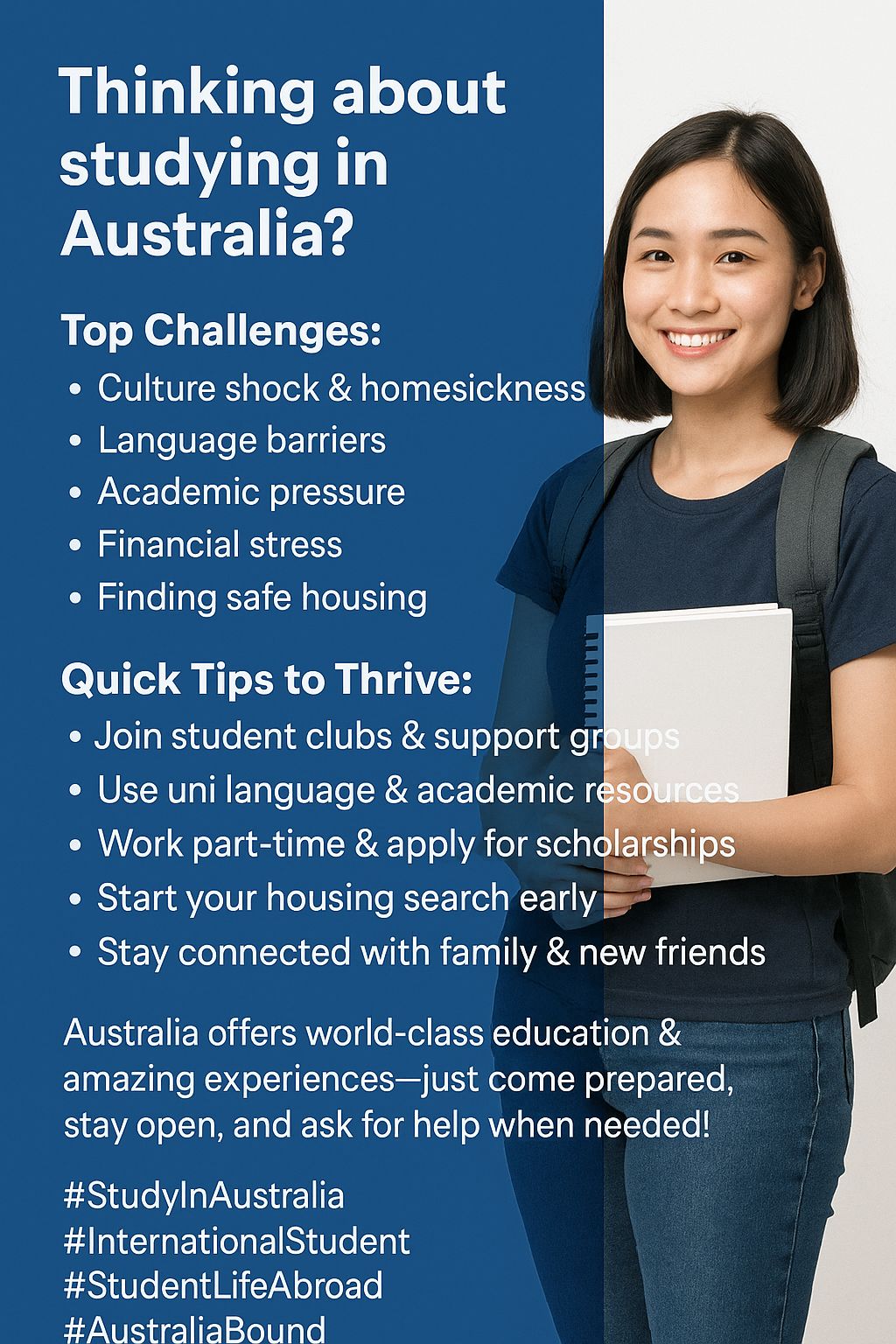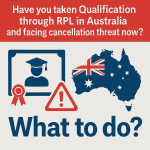International Student Life in Australia: Challenges and How to Overcome Them
- Posted by
- admin<
- Categories
- Australian Visa news
- Australian Visa updates
- Lifestyle
- Managing Finances
- News Updates
- Student Visa
- Visa Application
- Work Visa
- Date
- 16 May 2025
- Comments
- 0

Introduction
Australia stands as a global leader in education, attracting hundreds of thousands of international students every year. With its high-ranking universities, diverse cultural landscape, and welcoming society, it offers a unique environment for academic and personal growth. However, moving to a new country is never without its challenges. From cultural differences to academic pressures and financial constraints, international students in Australia often face a steep learning curve.
In this article, we dive deep into the day-to-day realities of international student life in Australia, highlight common challenges, and offer practical solutions to help students adjust, thrive, and make the most of their experience.
1. Cultural Differences and Homesickness
Challenge:
Adapting to a new culture can be overwhelming. From different social norms and customs to unfamiliar food and communication styles, international students often experience culture shock. This, combined with being far from family and friends, can lead to homesickness and loneliness.
Solutions:
- Participate in cultural events and student activities to meet locals and other international students.
- Join university support groups or cultural associations that offer a sense of community.
- Stay connected with family and friends through regular video calls, messages, and social media.
- Practice mindfulness or speak to a counselor to manage emotional stress and anxiety.
2. Language Barriers
Challenge:
While many international students meet the English requirements for admission, understanding Australian accents, slang, and idioms can still be difficult. This can affect academic performance and daily interactions.
Solutions:
- Take advantage of university language support services, such as English workshops and writing centers.
- Engage in conversation clubs or language exchange meetups.
- Watch Australian TV shows, movies, and news to get familiar with local accents and expressions.
- Don’t be afraid to ask for clarification during conversations or lectures.
3. Academic Expectations
Challenge:
Academic systems and expectations in Australia may differ significantly from students’ home countries. Students are expected to think critically, participate in discussions, and work independently.
Solutions:
- Attend orientation programs and academic skill workshops offered by universities.
- Reach out to tutors and professors for guidance if you’re unsure about an assignment or topic.
- Use campus resources like libraries, online databases, and academic counseling.
- Form study groups to learn collaboratively and share ideas.
4. Financial Pressure
Challenge:
Studying in Australia can be expensive, with tuition fees, accommodation, transport, and daily expenses adding up quickly. Some students may also feel pressure to send money home.
Solutions:
- Apply for scholarships and bursaries that are often available to international students.
- Work part-time under the student visa (up to 48 hours per fortnight during study periods, as of 2023).
- Create a realistic budget and track your expenses using budgeting apps.
- Seek financial advice from student support centers when needed.
5. Finding Accommodation
Challenge:
Finding affordable, safe, and conveniently located accommodation can be tough, especially in major cities like Sydney or Melbourne. Scams and high rental prices are additional concerns.
Solutions:
- Start your search early and consider university-managed accommodations for safety and ease.
- Use verified platforms such as university housing services or reputable websites like Domain or Flatmates.com.au.
- Inspect properties in person or virtually, and avoid paying deposits before verifying the legitimacy.
- Learn about your rights as a tenant from government websites and student unions.
6. Navigating Healthcare
Challenge:
Understanding how healthcare works in Australia can be confusing for newcomers. International students are required to have Overseas Student Health Cover (OSHC), but may not know how to use it.
Solutions:
- Understand what your OSHC policy covers and find local healthcare providers that accept it.
- Register with a general practitioner (GP) near your accommodation.
- Use university health services, which often offer lower-cost or free consultations.
- Download the OSHC provider’s app to manage claims and find services nearby.
7. Building a Social Life
Challenge:
Making new friends in a foreign country can be intimidating, especially if there are cultural and language differences.
Solutions:
- Join university clubs and societies that align with your interests.
- Volunteer for events or participate in student leadership roles.
- Attend social events, networking meetups, and workshops.
- Be open and proactive—remember, many other students are in the same situation.
Conclusion
Life as an international student in Australia is filled with opportunities for growth, learning, and unforgettable experiences. While challenges are part of the journey, being informed and proactive can make a significant difference. Universities and communities in Australia provide a wide range of resources and support systems to help international students feel at home.
By embracing the cultural diversity, seeking help when needed, and staying open to new experiences, international students can not only overcome these challenges but truly thrive in their academic and personal lives.
Are you an international student planning to study in Australia? Get in touch with Aussie Education’s student advisors to learn more about how we can support your journey from application to arrival and beyond!


































